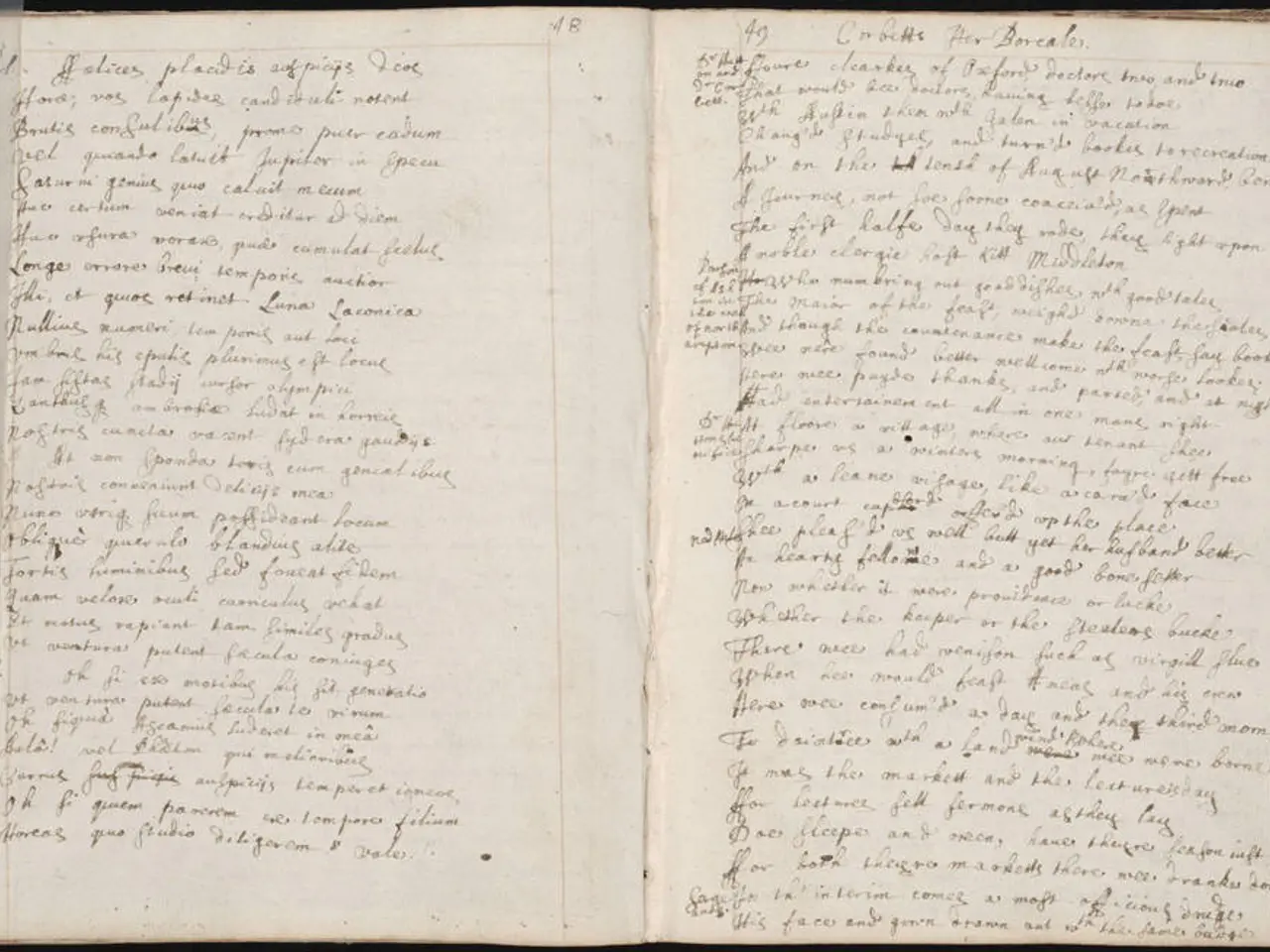Guidelines for Novice Writers to Dominate Their Publishing Venture
Embarking on a publishing journey can be an exciting yet daunting experience for first-time authors. To help you make the best decision, we've put together a comprehensive guide that covers the three main publishing routes and key considerations to bear in mind.
Embrace Your Vision and Focus on Your Goals
Stay dedicated to your vision and focus on your goals. Celebrate small victories along the way as you navigate the world of publishing.
Crafting a Strong Marketing Plan
A robust marketing strategy is essential for any book launch. It should encompass promotion before, during, and after the release, and be flexible to accommodate changes based on what resonates with your audience.
Choosing the Right Publishing Route
To select the best publishing option, start by clearly defining your goals, budget, desired level of creative control, and time availability. Then consider the key characteristics of the three main publishing routes:
Traditional Publishing
If you're aiming for industry prestige, professional support, wide distribution, and no upfront costs, traditional publishing might be the way to go. This route is ideal for authors seeking bookstore presence, awards, and strong editorial/design input. However, it comes with long timelines (often 18-24 months), less creative control, and the need to secure an agent and compete for acceptance.
Hybrid Publishing
Hybrid publishing offers a blend of professional services (editing, design, marketing) and more control and ownership. It's a good choice if you want a balance of support and autonomy, with quicker publication times. Authors usually pay for services, but fees are more transparent and manageable than vanity publishing. This option also typically lets you retain copyright and more rights compared to traditional publishing.
Creative Self-Publishing
For maximum creative control, faster time-to-market, and higher royalties per sale, consider creative self-publishing. This route is ideal if you want to keep ownership and manage marketing yourself. Platforms like Amazon KDP offer low upfront costs (free to upload), but you may need to pay for optional services like editing and cover design.
Key Considerations
- Goals: If prestige, wider bookstore distribution, and professional backing are top priorities, traditional publishing is best, but harder to enter and slower.
- Budget: Traditional publishers pay upfront but take big royalty cuts; hybrid requires author investment but gives more rights; self-publishing is cheapest to start but often requires paying for services yourself.
- Control: Self-publishing offers full creative control; hybrid shares control but usually lets you retain rights; traditional limits creative input and rights retention.
- Time: Self-publishing is fastest; hybrid is moderate; traditional takes longest from contract to market.
- Royalties: Amazon KDP offers up to 70% royalties on ebooks priced $2.99–$9.99; traditional royalties are much lower (5-15%) but come with advances and support.
Making the Right Choice
For a first-time author weighing these factors, a good approach is:
- Assess your priorities: Is getting into bookstores & awards more important than speed and royalties? Go traditional.
- If you want control and speed but some help: Consider hybrid, ensuring you understand all fees and retain rights.
- If budget-conscious and willing to learn self-marketing: Self-publish on platforms like Amazon KDP, invest in professional editing/design separately.
Additional Tips
- Talk to authors who have used each path to understand real timelines and challenges.
- Review contracts carefully, especially with hybrid publishers, to confirm rights and fees.
- Use quizzes or guides from self-publishing specialists to find the best fit platform and model for your specific needs.
Building Your Publishing Network
Join local writer's groups, online forums, or social media communities for support, feedback, and networking opportunities. Research designers who specialize in your genre for a better understanding of visual elements that attract readers. A well-designed cover is an investment in your book's success, as it can greatly influence readers' first impressions. Invest in a professional cover designer to ensure a polished and industry-standard cover that stands out.
Persistence and Patience
Persistence and patience are crucial in the publishing process, as rejections and setbacks are common. Setting up pre-orders can help generate early excitement for your book and contribute to a successful launch and steady book sales. A strong writing community can make the process more enjoyable and provide essential advice and support throughout the publishing journey.
Adaptability is Key
The publishing industry is unpredictable, with trends and demands changing frequently, so remain adaptable and open to new tactics. Embrace the challenges and enjoy the journey towards becoming a published author.
Invest in a professional cover designer to ensure a polished and industry-standard cover that stands out, as a well-designed cover can greatly influence readers' first impressions.
A robust marketing strategy is essential for any book launch, so craft a plan that encompasses promotion before, during, and after the release, and be flexible to accommodate changes based on what resonates with your audience.




